Spinal Astrocytoma — Surgical treatment of Astrocytoma in the Best Hospitals in the World
Treatment prices are regulated by national law of the corresponding countries, but can also include additional hospital coefficients. In order to receive the individual cost calculation, please send us the request and medical records.
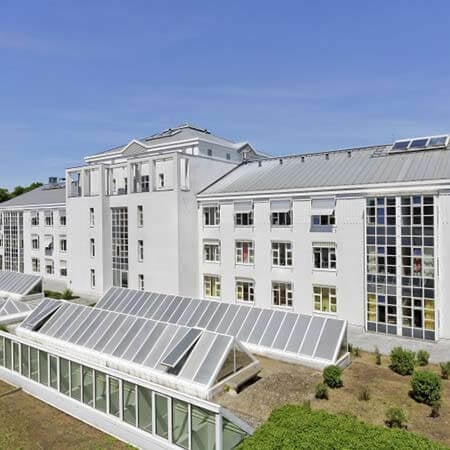
Department of Spinal Surgery
The Department of Spinal Surgery at the Vivantes Auguste-Victoria Hospital all diseases of the spine - both conservatively and operatively. Patients with herniated intervertebral discs, displacement of vertebrae, stenosis of the spinal canal or back pain are treated here. In addition, specialists of the department have a unique experience in the field of complex reconstructive and revision surgeries, which are conducted to continue or correct the previous surgical treatment.
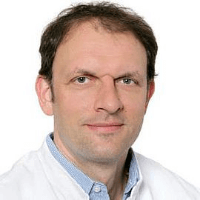
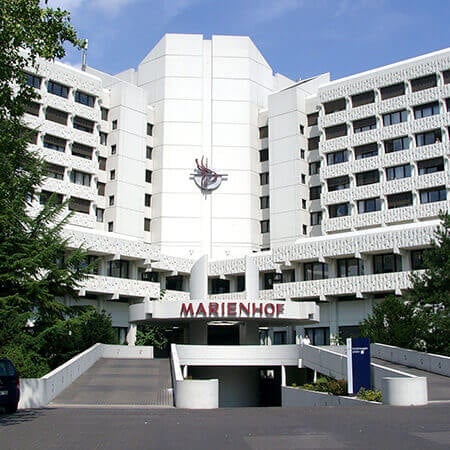
Department of Spinal Surgery
The Department of Spinal Surgery offers the full range of effective treatment methods in the area of its specialization. A highly qualified team of doctors is at the service of the department's patients, who have in their arsenal advanced conservative and surgical treatment methods for pathological changes in the spine. Spinal surgical procedures are performed in modern operating rooms, the technical equipment of which allows spinal surgeons to perfectly perform both major open surgery and sparing interventions: minimally invasive, endoscopic, and microsurgical. Surgical treatment is complemented by a carefully planned course of physiotherapy. This includes procedures such as therapeutic exercises, manual therapy, massage, osteopathic treatment, etc. The department's team of doctors consists of 10 highly qualified specialists who, together with experienced nursing staff, admit more than 1,300 inpatients annually. The medical facility is certified by the German Society for Spine Surgery (DWG) as a level II specialized center. The department's medical team makes every effort to provide each patient with optimal treatment in a pleasant and friendly atmosphere.
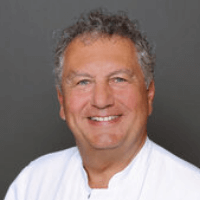
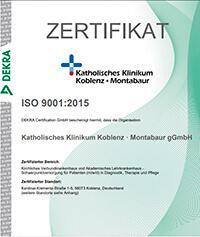
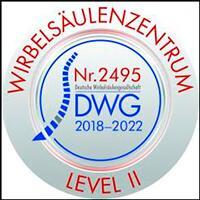
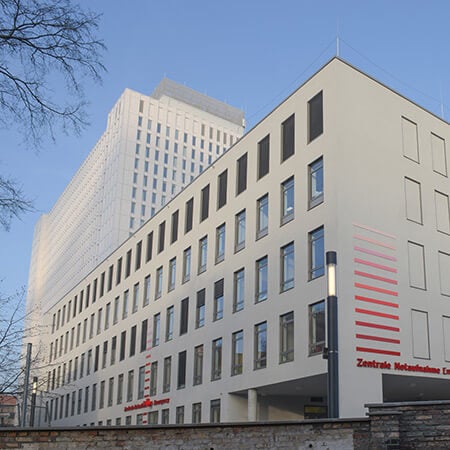
Department of Adult and Pediatric Neurosurgery, Spinal Surgery
The Department of Adult and Pediatric Neurosurgery, Spinal Surgery offers all the possibilities of modern surgical treatment for diseases of the central and peripheral nervous system in patients of all ages. More than 6,000 surgical procedures are performed annually in the department's high-tech operating rooms. Both planned and emergency neurosurgical procedures are performed here. The department's surgical team focuses on patients with cerebrovascular diseases, brain and skull base tumors, spine and spinal cord diseases, cerebrospinal fluid circulation disorders, and pathologies of the peripheral nervous system. The department's team of physicians also has extensive experience in functional neurosurgery: specialists perform deep brain stimulation for movement disorders, spinal cord stimulation for back pain, and vagus nerve stimulation for epilepsy. The department works closely with neurologists, radiologists, and nuclear medicine specialists to provide patients with the highest level of comprehensive medical care. The department is recognized as one of the top neurosurgical centers in Germany and beyond, as evidenced by consistently high treatment success rates and numerous quality certifications, including the German Cancer Society (DKG) Certificate, the German Spine Society (DWG) Certificate, and the Leading Medicine Guide Certificate.
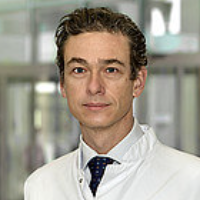





Spinal astrocytomas are intramedullary tumors classified as a subtype of gliomas. These are usually low-grade neoplasms, but they may be malignant. The results of treatment depend primarily on the histological type of the tumor as well as on whether a surgeon has managed to remove the neoplasm completely. You can have your treatment abroad and expect good surgical outcomes. On the Booking Health website, you can select a hospital, compare the cost of treatment, and choose a medical care program at a favorable price.
Content
- Treatment principles for spinal astrocytomas
- Preoperative diagnostics for spinal astrocytomas
- How is spinal astrocytoma surgery performed?
- Results of spinal astrocytoma surgery
- Where to undergo your treatment for spinal astrocytomas?
Doctors remove the tumor, performing a total resection whenever possible. At the same time, surgeons strive to minimize damage to the spinal cord. Tumors rarely recur after their total resection, as most astrocytomas are benign.
You can seek medical attention from the Charite University Hospital Berlin, the Vivantes Auguste-Viktoria Hospital Berlin, or the Catholic Clinic Koblenz-Montabaur.
Our specialists will take care of organizing your trip abroad. We will select a hospital and book hotel and airline tickets for you. We will also meet you at the airport, take you to the hospital by car, provide support, and help resolve any issues during your stay abroad.
Treatment principles for spinal astrocytomas
Spinal astrocytic gliomas are very rare neoplasms, and there are currently no standard treatment methods for them. Basically, doctors begin treatment with surgery, and then carry out radiation therapy, sometimes supplementing it with chemotherapy.
Spinal tumors are 15 times less common than brain tumors. Moreover, only 20% of tumors are intramedullary, that is, they grow from the gray matter of the spinal cord. It is to such neoplasms that astrocytomas belong. Together with ependymomas, astrocytomas account for up to 90% of all brain gliomas and are the second most common among tumors of this type.
The results of treatment for spinal cord astrocytomas depend mainly on the tumor grade.
Low-grade tumors may be completely removed by doctors. In this case, a patient has a good chance of recovering completely from cancer.
High-grade tumors have a poor prognosis. They grow into the tissues of the spinal cord, do not have any clear boundaries, and usually cannot be completely removed. Doctors usually remove spinal astrocytomas partially to improve neurological status and then try to control the disease with radiation therapy and chemotherapy. Targeted therapy can also be used in developed countries.
Preoperative diagnostics for spinal astrocytomas
The main method of preoperative diagnostics for patients with spinal astrocytomas is an MRI. Doctors prefer a contrast-enhanced examination. An MRI scan allows the specialists to suggest the grade of the tumor and determine its boundaries. A CT scan of the spinal cord and neurophysiological studies can sometimes be used to plan the surgical treatment of the disease.
How is spinal astrocytoma surgery performed?
Surgical treatment for astrocytomas is aimed at removing the tumor. A neoplasm resection can be:
- complete (total);
- almost complete (subtotal);
- partial.
The more extensive the resection, the better the prognosis. Doctors, however, cannot always remove the tumor completely due to the threat of developing a neurological deficit. Total and subtotal spinal astrocytoma removal surgery is more often than not possible for patients with grade 1-2 neoplasms, while 3-4 grade tumors are usually removed partially.
The operation is performed under general anesthesia. Doctors perform a laminectomy, which means that they remove the vertebral arches to approach the spinal cord. A laminoplasty may be performed in younger patients with multilevel tumors. The arches will be removed and then placed in their original places.
When performing surgery, doctors try to detect the tumor and separate it from healthy tissue. This is easier to do in patients with low-grade spinal cord astrocytomas that have clear boundaries. High-grade tumors do not have any clear boundaries, so surgeons partially remove such neoplasms.
Doctors abroad use the following methods to perform a more total removal of the tumor, improve the safety of surgery, and prevent damage to important structures of the spinal cord:
- intraoperative neurophysiological monitoring;
- computed tomography;
- neuronavigation with advanced microscopy-based augmented reality capabilities.
The experience of the surgeon and the quality of the equipment largely determine the success of surgery. In countries with poor medicine, even a benign spinal astrocytoma can be completely removed in only 5% of cases, whereas the number of total resections at specialized centers abroad reaches 72%.
When the surgical procedure is completed, doctors have to ensure the stability of the spine. It is impaired due to the removal of the vertebral bone tissue. Doctors may immobilize adjacent vertebrae or implant dynamic stabilization systems to restore the stability of the spine. The second option is more preferable, as it preserves the mobility of the spine and prevents the development of the disease in adjacent spinal segments. This is especially important for patients with a high life expectancy after the complete removal of low-grade astrocytomas.
The operation is followed by an MRI scan to determine if the tumor has been completely removed. With the help of this diagnostic test, doctors can see the residual tumor tissue, if any, which helps to plan further treatment tactics.
Results of spinal astrocytoma surgery
The results of the surgical intervention depend on whether the tumor has been completely or partially removed, as well as on its grade. Over 40 years of age is regarded as a prognostically unfavorable factor.
The treatment results at medical centers abroad are usually good for patients with 1-2 grade tumors, as a 5-year survival rate of 93% is achieved. The treatment results for high-grade tumors are worse. The operation will help increase life expectancy by several years, but a patient will need additional treatment after the operation, and a complete cure of the disease should not be expected.
Immediately after the operation, the neurological status improves. Further neurological rehabilitation helps to restore mobility and sensitivity. Good rehabilitation potential can be maintained for several months. However, the more pronounced the neurological deficit is at the time of the operation and the longer it persists before the start of treatment, the less the spinal cord functions will be restored.
Low-grade astrocytomas rarely recur, so after their total removal, additional treatment methods are not required. If the tumor was not completely removed or if it was a high-grade neoplasm, then adjuvant treatments can be conducted using radiation therapy and systemic chemotherapy.
Where to undergo your treatment for spinal astrocytomas?
You can opt to undergo your spinal cord tumor treatment abroad. Physicians in developed countries successfully operate on children and adults with benign and malignant spinal astrocytomas. The world's best hospitals achieve excellent results, and most patients can fully recover.
Treatment at hospitals abroad has the following advantages:
- high-precision diagnostics before surgery allow ideal treatment planning;
- intraoperative diagnostics makes the removal process safer and more efficient;
- doctors at hospitals abroad mostly manage to completely remove the spinal astrocytoma;
- doctors do not damage important spinal cord structures, so they do not exacerbate neurological deficits;
- doctors restore the stability of the spine and use dynamic fixation systems to keep it moving;
- surgical treatment is followed by a full rehabilitation that ensures the restoration of mobility and sensitivity in the next few weeks.
Hospitals abroad have state-of-the-art equipment. They employ doctors who are considered among the best in the world. You are welcome to use the Booking Health service to undergo your treatment at a specialized center with vast experience in the removal of spinal cord tumors. On our website, you can find out the cost of treatment at different hospitals, compare prices, and choose a medical care program at the best price. The prices for you will be lower than when you contact the hospital directly. The cost will be reduced due to the lack of taxes for foreign patients.
The specialists from the Booking Health company will take care of all the arrangements for your trip abroad. We will help you prepare your documents and book hotel and airline tickets. We will also provide interpreting services, meet you at the airport abroad, and take you to the Neurosurgery Center by car.
Authors:
The article was edited by medical experts, board-certified doctors Dr. Nadezhda Ivanisova and Dr. Vadim Zhiliuk. For the treatment of the conditions referred to in the article, you must consult a doctor; the information in the article is not intended for self-medication!
Sources:

